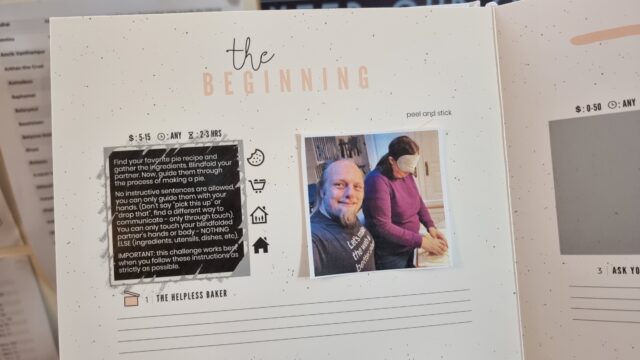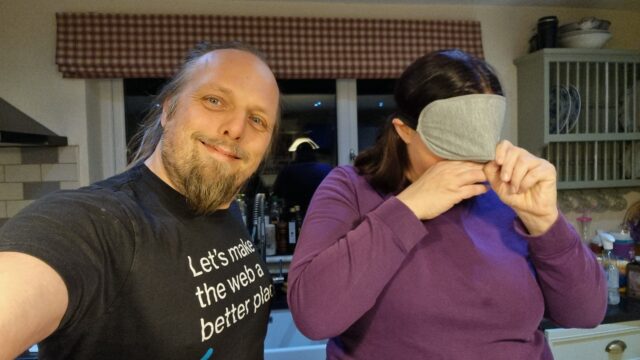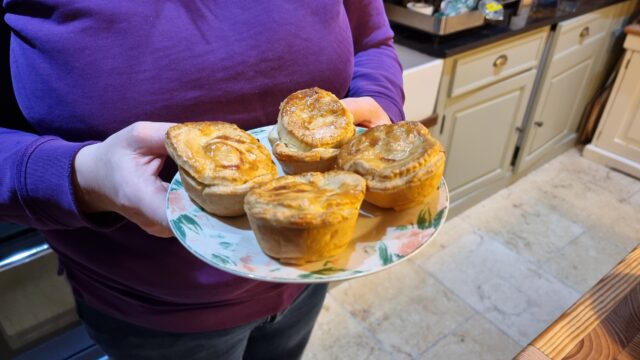Ruth bought me a copy of The Adventure Challenge: Couples Edition, which is… well, it’s basically a book of 50 curious and unusual ideas for date activities. This week, for the first time, we gave it a go.

As a result, we spent this date night… baking a pie!
The book is written by Americans, but that wasn’t going to stop us from making a savoury pie. Of course, “bake a pie” isn’t much of a challenge by itself, which is why the book stipulates that:
- One partner makes the pie, but is blindfolded. They can’t see what they’re doing.
- The other partner guides them through doing so, but without giving verbal instructions (this is an exercise in touch, control, and nonverbal communication).

We used this recipe for “mini creamy mushroom pies”. We chose to interpret the brief as permitting pre-prep to be done in accordance with the ingredients list: e.g. because the ingredients list says “1 egg, beaten”, we were allowed to break and beat the egg first, before blindfolding up.
This was a smart choice (breaking an egg while blindfolded, even under close direction, would probably have been especially stress-inducing!).

#JustSwitchThings
I really enjoyed this experience. It forced us into doing something different on date night (we have developed a bit of a pattern, as folks are wont to do), stretched our comfort zones, and left us with tasty tasty pies to each afterwards. That’s a win-win-win, in my book.
Plus, communication is sexy, and so anything that makes you practice your coupley-communication-skills is fundamentally hot and therefore a great date night activity.

So yeah: we’ll probably be trying some of the other ideas in the book, when the time comes.
Some of the categories are pretty curious, and I’m already wondering what other couples we know that’d be brave enough to join us for the “double date” chapter: four challenges for which you need a second dyad to hang out with? (I’m, like… 90% sure it’s not going to be swinging. So if we know you and you’d like to volunteer yourselves, go ahead!)